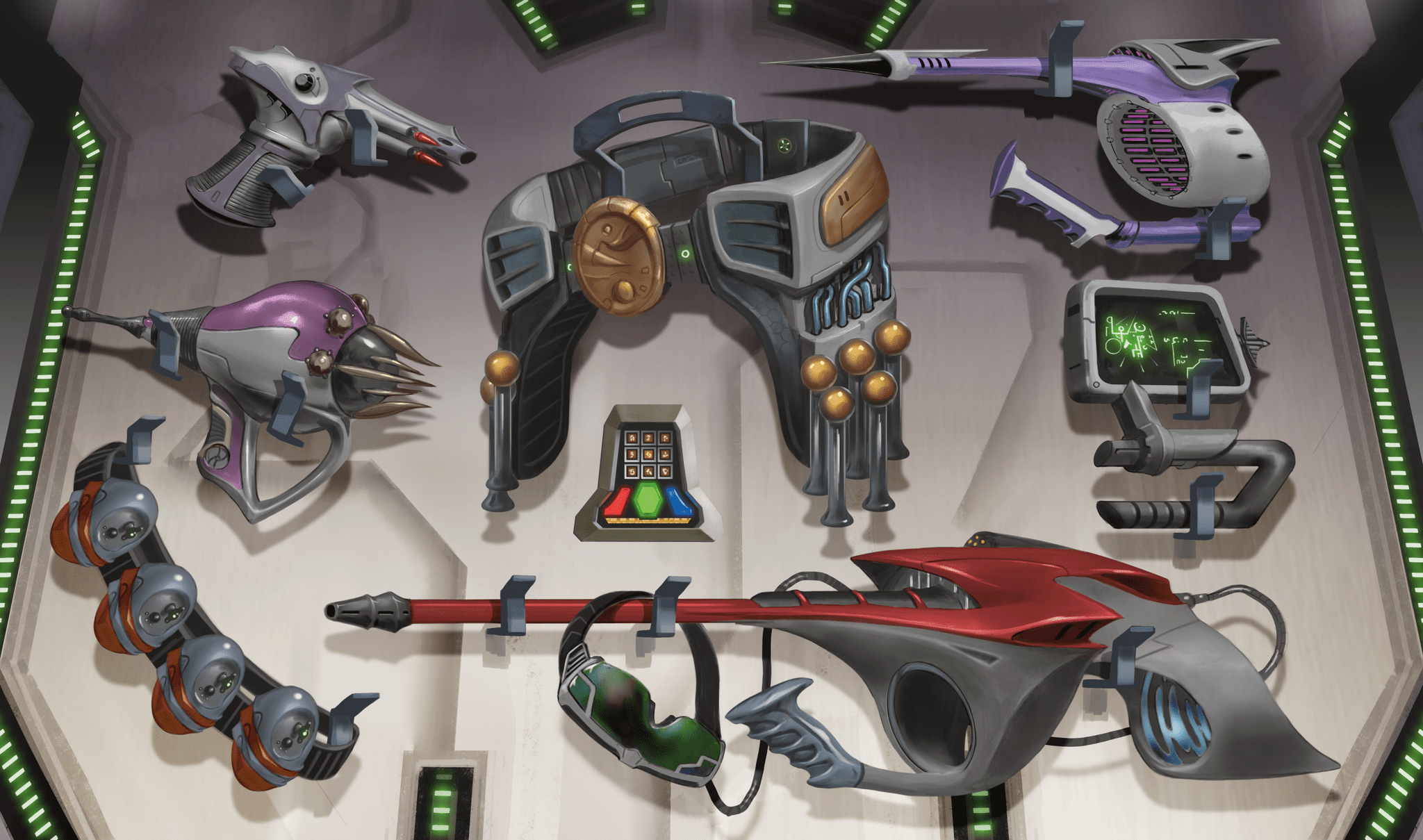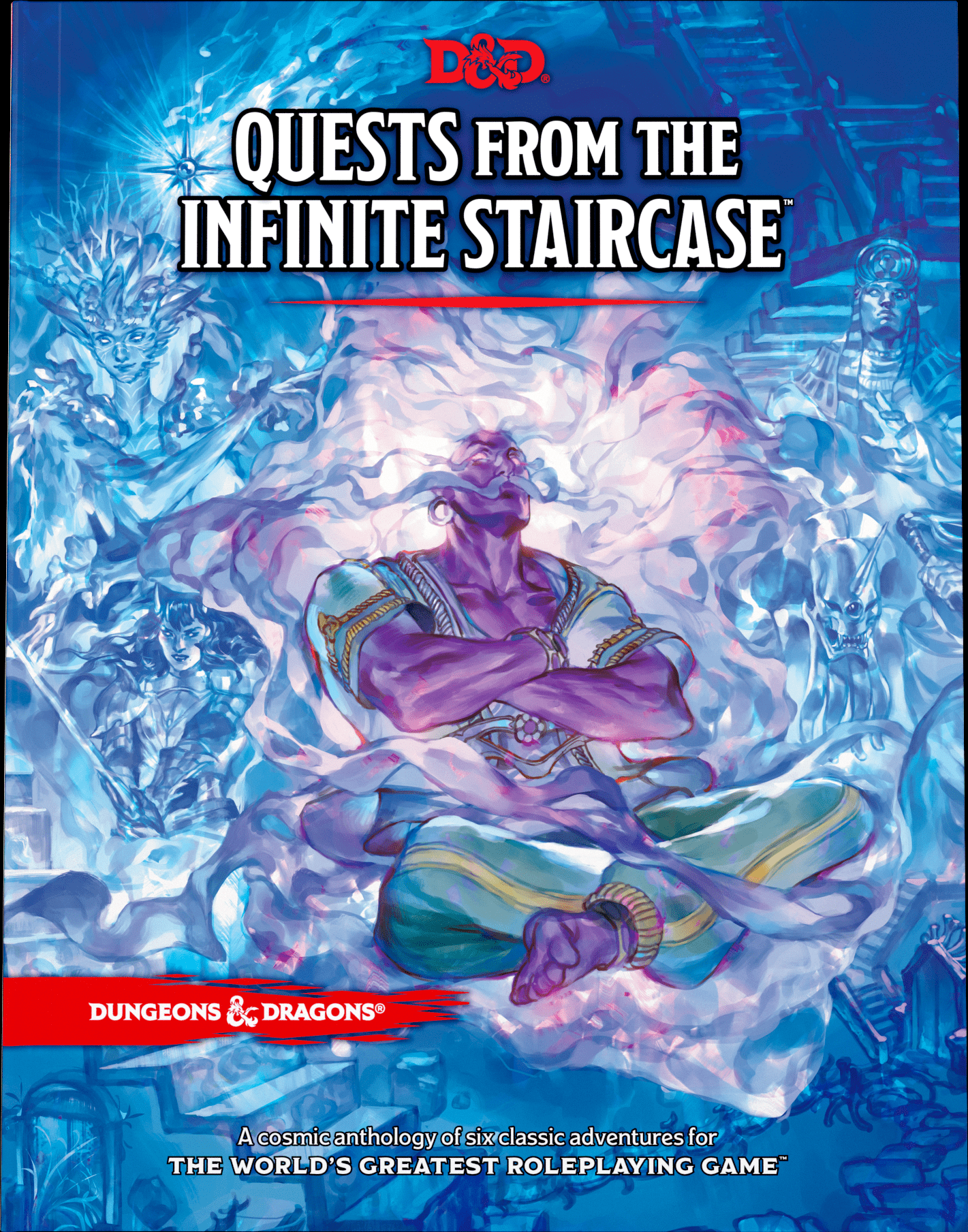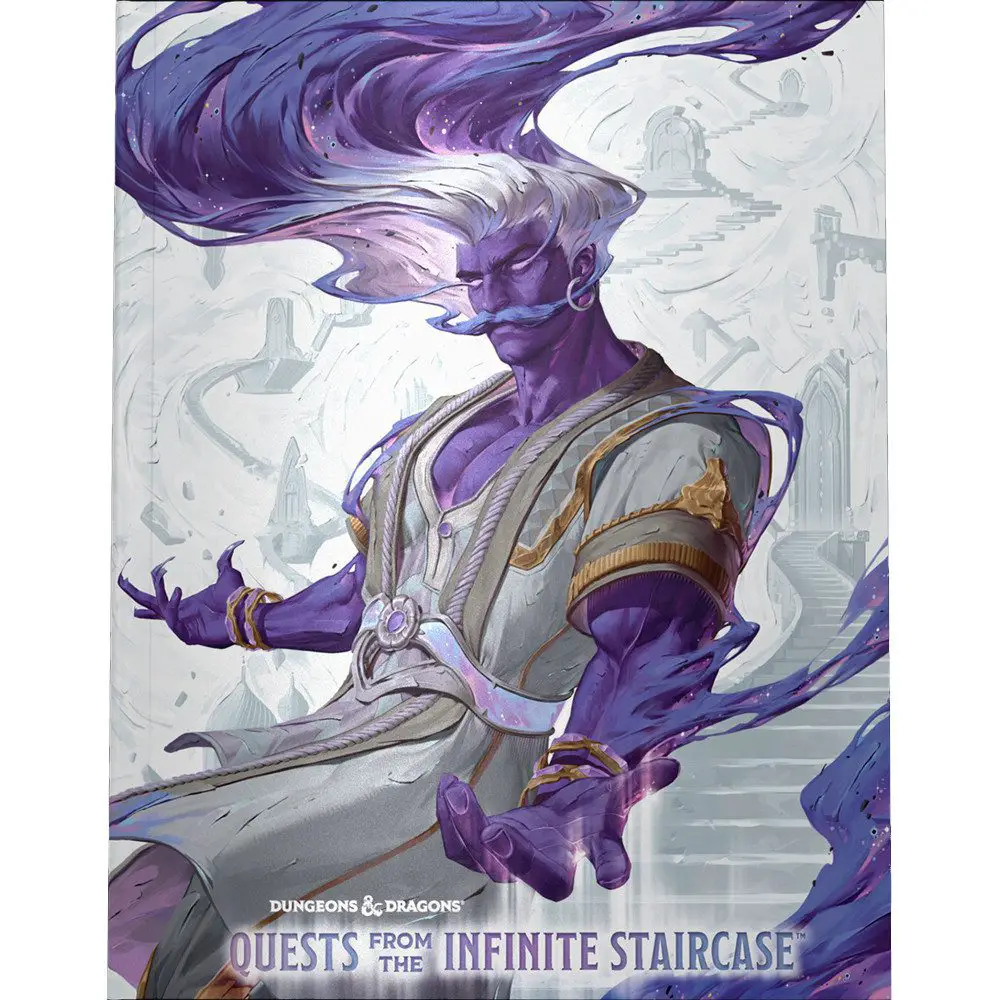How would your average fantasy adventurer approach a crashed spaceship filled with monsters and gadgets? That’s the core story hook of Expedition to the Barrier Peaks, one of six remastered adventures featured in Quests from the Infinite Staircase, the upcoming volume of Dungeons and Dragons adventures.
Wizards of the Coast invited a number of journalists to try out their new version of Expedition at a press event, where they not only showed off the new campaign but the latest version of D&D Beyond’s map feature, which they have attempted to make a more prominent tool for D&D players. So how did it hold up?
The Expedition Preview

Expedition to the Barrier Peaks was an adventure module published for Advanced Dungeons and Dragons by Gary Gygax. The setting is considered Science Fantasy and tries to blend a 1980s sense of science fiction with the fantasy elements of the world. The game was initially introduced to D&D players through a tournament scenario at the 1976 Origins II convention in Baltimore, where Gygax added a literal crashed spaceship to his own home-spun Greyhawk universe. The official version wasn’t published until 1980 and has remained a notable entry in the RPG history. The short adventure is considered one of the earliest D&D adventures to incorporate science fiction elements into its fantasy storytelling.
The story of the short campaign we experienced (DMed by game designer and Critical Role contributor Makenzie De Armas) began with a simple hook: a series of towns had been destroyed around a mountain, and our level 11 adventuring party was asked by a local mayor to go up to a mountain and investigate.
That is where we found a recently unearthed spaceship, which had previously been buried in a landslide but was recently revealed and activated. All of the ship’s mortal residents died centuries ago from a virus, leaving only robots and the ship AI in control. There were also a number of monsters and creatures who had broken out and made homes across the ship. These creatures had to be taken care of, the AI told our party. And so we did our very best. By the end of our 3-hour session, we blew up several Vegepygmies and successfully defeated a frog-shaped monstrosity that was believed to be behind the attacks.
The game was rebuilt with care, De Armas emphasized, including incorporating an assortment of items, monsters and features that originated in Gygax’s initial adventure. For example, my party got power armor and a laser pistol during our short run, both of which are items that appeared in the original version of Expedition.
The dungeon is a fairly large and complex series of doors and passages that are controlled by a number of access cards designating certain levels of authorization. If they wish to get through a blue door, for example, then they’ll need a blue keycard. The maps illustrating this were extremely well done and a delight to look at on their own. The new monster art was also amazing, whether it was the Vegepygmies or the Androids that were spread out through the ship.
At least two of the other players in my party appeared very familiar with the original material and were delighted with how the campaign portrayed the adventure, which offers some hope that fans and older players will enjoy the campaign’s return to old-school D&D.
D&D Beyond Online

The game was played online using Wizards of the Coast’s DNDBeyond Alpha map feature, which offers a simple and accessible VTT option with few technical issues. Players created characters using the customization features presented on the site. Then, they rolled directly from the sheet, with the dice results appearing in the campaign map as the game progressed.
The D&D Beyond mapping feature feels reliable and easy to use for new DMs who want to play online. The up-front integration of the company-owned maps makes it easy for a player to initiate a new campaign like Hidden Obelisk or Stairs without much struggle or having to spend hours on coding or designing the framework for combat.
The software currently lacks options for taking the game to the next level, however. I regularly DM using Roll20 and Foundry for online groups, and they each offer various options to customize the map. For example, Roll20 and Foundry have options for walls and lighting on their maps, which allow a DM to control what a player sees on the map as they explore. While this feature does take time to set up beforehand, it helps establish this sense of immersion, where players can turn around a corner and suddenly find themselves facing off with a dragon.
D&D Beyond’s maps use what could be described as a “Whiteboard” approach, where the DM erases the unseen parts in real-time.
The Maps function remains in alpha, and will likely receive additional updates going forward. But based on my own experience with it, it has a significant way to go before it can compete with the rest of the VTT market.
Is the Infinite Staircase worth it?
As players and journalists, we didn’t have much time to dive deep into the game’s particulars or to run Expedition completely. But in the short preview we received, it appeared clear that the team was very dedicated to upholding the original campaign’s quality and did a delightful job of bringing it to life.


Quests From The Infinite Staircase hits shops July 16, though you can get early access through D&D Beyond on July 9th. You can also go to your FLGS and pick up a copy to get your hands on the special alt cover.
Images via Dungeons & Dragons
Have strong thoughts about this piece you need to share? Or maybe there’s something else on your mind you’re wanting to talk about with fellow Fandomentals? Head on over to our Community server to join in the conversation!


